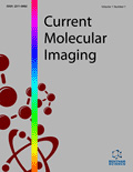Abstract
Optical imaging assays, especially fluorescence molecular assays, are minimally invasive if not completely noninvasive, and thus an ideal technique to be applied to live specimens. These fluorescence imaging assays are a powerful tool in biomedical sciences as they allow the study of a wide range of molecular and physiological events occurring in biological systems. Furthermore, optical imaging assays bridge the gap between the in vitro cell-based analysis of subcellular processes and in vivo study of disease mechanisms in small animal models. In particular, the application of Förster resonance energy transfer (FRET) and fluorescence lifetime imaging (FLIM), well-known techniques widely used in microscopy, to the optical imaging assay toolbox, will have a significant impact in the molecular study of protein-protein interactions during cancer progression. This review article describes the application of FLIM-FRET to the field of optical imaging and addresses their various applications, both current and potential, to anti-cancer drug delivery and cancer research.
Keywords: Cancer therapy, diagnostics, Förster resonance energy transfer (FRET), fluorescence lifetime imaging (FLIM), near infra-red (NIR), in vivo imaging, lifetime.
 20
20

